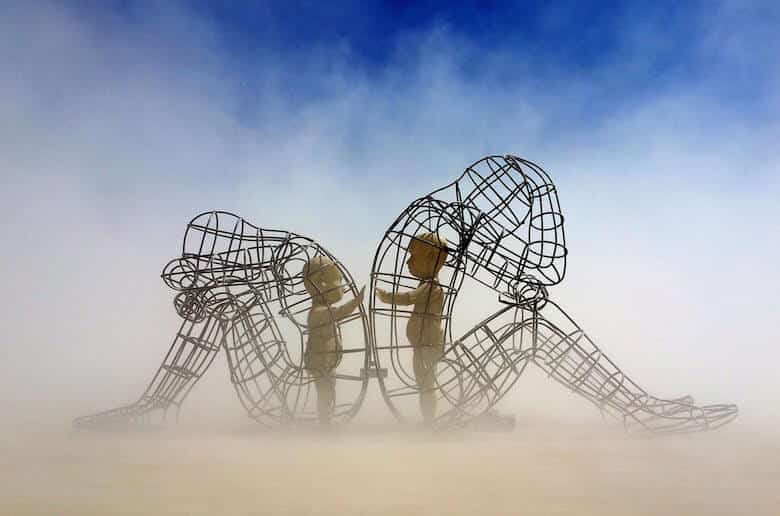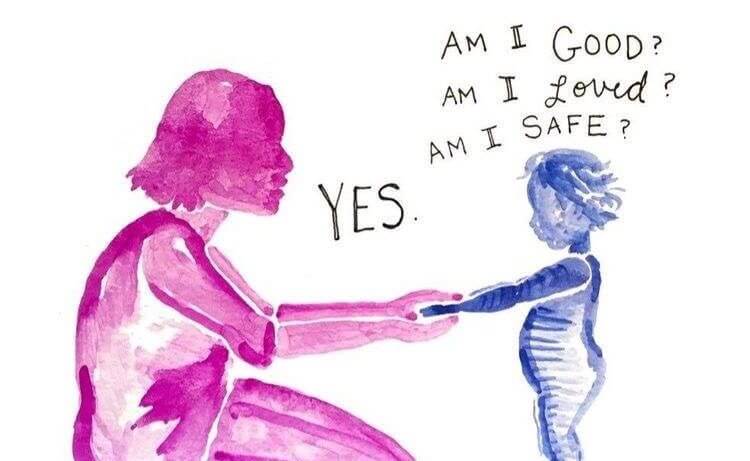The idea of becoming your own parent may sound a bit out there at first. But what if inner child work is essential for behavior or emotional healing?
You may think of yourself as a grown-up just because you reached a certain age. The truth is, many adults carry wounded children within themselves. Often, we don’t see it. We cover up childhood trauma by staying busy and dead-serious about everything we do.
Meanwhile, your inner child holds the key to endless joy, freedom, and creativity. To access these, reparenting yourself may be necessary. Your inner child needs you to acknowledge and process its painful experiences.
Only then will it feel safe enough to come out and play the game of life freely.
The degree of childhood trauma differs from person to person. For some, it may come from severe childhood abuse. Others experience subtler forms of abandonment, parental neglect, or simply struggle to fit in their peer group.
What Is Inner Child Work?
The concept of the “inner child” originates in Jungian therapy. Carl Jung proposed that the “Child archetype” is the first milestone in the process of individuation — or forming the Self.
Working with your inner child draws on one simple observation: all adults were children at one time. Those children within us don’t simply disappear as we grow older.
Your child self stays with you as a part of your unconscious. It represents your childhood qualities and ways of being. You can think of it as your “subpersonality” — one of the multiple dimensions of being human.
The inner child often gets activated when you’re faced with challenges that remind you of a traumatic childhood memory. Until you consciously process and integrate those memories, your child self is calling the shots.
The definition of the inner child from Harley Therapy’s blog reads:
“The inner child reflects the child we once were in both their ‘negative’ and ‘positive’ aspects. Both our unmet needs and suppressed childhood emotions, as well as our childlike innocence, creativity, and joy, are still waiting within of us.”
This tells us that inner child work (aka reparenting yourself) has two aspects to it:
One is about reclaiming all the positive qualities of the child within. It’s becoming playful and joyful for no reason at all. It’s making silly jokes and having fun with your own kids, carefree and present in the moment.
This side of inner child work is about expressing yourself freely. However, most people need to deal with the suppressed memories of their inner child, too.
This is the second and often more challenging side of reparenting yourself. It’s a bit like what some people call “shadow work.” In short, it’s about consciously processing painful feelings and experiences that you suppressed a long time ago.
This may feel overwhelming — especially for those who didn’t have their basic needs met as children.
In his theory of psychological development, Richard Barrett explains that as we enter the human experience, we all need two things before everything else. These are physical safety and a sense of acceptance and belonging. If parents or caregivers fail to provide that, these unmet needs may chase you along your life path.
As an adult, you can meet those needs by reparenting yourself. This is about stepping into the role of exactly the kind of parent your inner child needs. You may think: “But this isn’t me! I had a happy childhood. My parents didn’t abuse me. They loved me. We always had food on the table and a safe place to live.”
The tricky part is your parents didn’t have to do anything spectacularly wrong to leave an imprint on your child self. Childhood trauma sometimes has roots in the most innocent-looking family dynamics. To the adults, it’s just another day of trying to balance family, work, and social life. To the child, it may be the day they get deeply wounded. They may then carry those wounds into adulthood — and unknowingly pass them on to their children.

What Is Childhood Trauma and How It Happens
The word “trauma” brings horrible things to mind. But you don’t need to go through severe childhood abuse to become traumatized.
The psyche of a child is so fragile it can be affected by what seems like a minor event. In the child’s view of the world, everything looks different. Because children are fully dependent on their caregivers to meet their needs, they may interpret minor negligence as an enormous threat.
What’s more, children can’t recognize their limited perspective. They believe everything they see. Their interpretation of life instantly becomes their reality.
When going through these kinds of painful experiences as children, we’re often taught to hide our pain. A lot of parents discourage their kids from crying or expressing anger. We’re only told we’re being “good” when we’re cheerful, smiling, and polite.
This is how childhood trauma becomes unconscious. If you hide it long enough from others, you eventually also start hiding it from yourself. This way, you can cheat yourself that you’ve “overcome it.”
In reality, the wounded child inside you keeps running your life. It pushes you into behaviors that sabotage your happiness, without you being aware of it. Usually, this continues until you address the problem through inner child work.
All this talk about childhood trauma isn’t to blame your parents — or anyone else who may have caused you pain. Most probably, these people were doing their best with what they had and knew. But, due to their circumstances, they may have failed to give you the attention you needed.

How To Reparent Your Inner Child and Heal Trauma
To reparent yourself is to give your inner child what it needs on the emotional level. As Stephen Diamond explains in his book Psychotherapy for the Soul:
“[T]he adult part of the personality learns (…) to relate to the inner child exactly as a good parent relates to a flesh-and-blood child, providing discipline, limits, boundaries and structure. These are — all along with support, nurturance, and acceptance — indispensable elements of loving and living with any child, whether metaphorical or actual.”
Some of us still try to find someone “out there” to comfort their inner child. It’s easy to believe that once you find a perfect partner, a soul mate or a spiritual community, everything will finally be alright.
But this is usually a band-aid solution. Other people only comfort your inner child if they act according to your expectations. The moment they do something that’s not on your agenda, old wounds are brought to the surface. You go back to suffering.
That’s why inner child work is so powerful. It allows you to become your own parent by consciously working with the trauma you experienced as a child. You learn to give yourself as much loving attention as you require to heal. And you don’t need to depend on anyone for that.
Although reparenting techniques come in all shapes and sizes, there are three general steps to work with your inner child: connect, communicate, and nurture.
- First, you need to acknowledge the child within. If it goes unnoticed, you can’t begin the healing process.
- Then, you start communicating with it. Finding a way to hear what your inner child must tell you is key to access the source of your trauma.
- Finally, you step into the role of a nurturing parent. From your adult self, you give your child self exactly what it needs.

Those children are still with us today. Many of them are hiding. They’re waiting for someone to come and acknowledge their pain.
Once that happens, they’ll be ready to enjoy every moment, carefree and light. They want to express themselves. For that, they need to feel safe and loved.
When they can’t, it’s usually because of unresolved childhood trauma. These are the painful experiences from the past that you learned to suppress. You may not notice them in everyday life. But this doesn’t mean they’re not there.
Your inner child may sabotage your adult experience by trying to get you to heal its unresolved issues. You can do that through reparenting yourself. This means providing a loving presence and self-compassion that you wished you had received as a child.
This usually happens in three stages:
- connecting with your inner child,
- listening to what it has to say,
- nurturing the child and meeting its emotional needs.
If you need help with doing inner child work, reach out to our team today.

